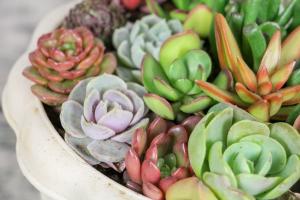Introduction
Pruning tomato plants is essential for increasing their yield. It can help to distribute the energy and nutrients of the plant evenly, which leads to the production of more fruits. However, many gardeners are unsure about how to prune their tomato plants properly. Here are some tips on how to prune tomato plants for higher yield.
Timing
The best time to prune tomato plants is during the early stages of their growth. This is because pruning stimulates new growth and encourages the plant to develop more fruits. You should start pruning when the plant has grown to about 12-18 inches tall, and when it has at least two sets of leaves.
Tools needed
You'll need a few basic gardening tools to prune your tomato plants properly: a pair of garden gloves, sharp pruning shears, and possibly a saw. A saw can be helpful if your tomato plants have branched out at the base, which can make them difficult to prune. Make sure your tools are sharp and clean before you start pruning to avoid damaging the plant.
Removing suckers
Suckers are small shoots that grow from the joint where the main stem meets the branches of the tomato plant. They do not produce fruit, but they can compete with the main stem for nutrients and water. To prune suckers, use your fingers or pruning shears to cut them off when they are small and tender. Be careful not to cut the main stem or leaves of the plant.
Pruning the lower branches
Tomato plants tend to put out more foliage and branches than necessary, especially at the bottom of the plant. These lower branches do not get as much sunlight as the upper branches, and they can increase the risk of disease and pests. To prune the lower branches, use your pruning shears to cut them off as close to the main stem as possible. This will promote better air circulation and sunlight penetration, which can lead to healthier and more fruitful plants.
Supporting the plant
Pruning can make your tomato plants less bushy and more upright, which may require that you provide additional support. You can use stakes or cages to support the plants and prevent them from falling over, especially when they are loaded with fruits. Make sure to install the supports before the plants get too big, as it can be challenging to support large, heavy plants.
Fertilizing
Pruning can increase the yield of your tomato plants, but it also means that the plant may require more nutrients to support the new growth. Applying a balanced fertilizer that is rich in nitrogen, phosphorus, and potassium can help to replenish the plants' nutrients and stimulate growth. Make sure to follow the recommended dosage and application method, as over-fertilization can cause more harm than good.
Conclusion
Pruning is an essential skill for any gardener who wants to grow healthy and fruitful tomato plants. By removing suckers and lower branches, supporting the plant, and fertilizing it adequately, you can increase the yield of your tomato plants significantly. Follow these tips, and you'll be rewarded with a bountiful harvest of juicy and delicious tomatoes.

 how many times do yo...
how many times do yo... how many planted tre...
how many planted tre... how many pine trees ...
how many pine trees ... how many pecan trees...
how many pecan trees... how many plants comp...
how many plants comp... how many plants can ...
how many plants can ... how many plants and ...
how many plants and ... how many pepper plan...
how many pepper plan...
































